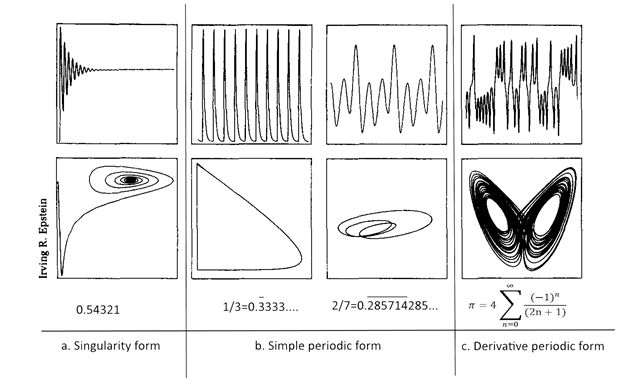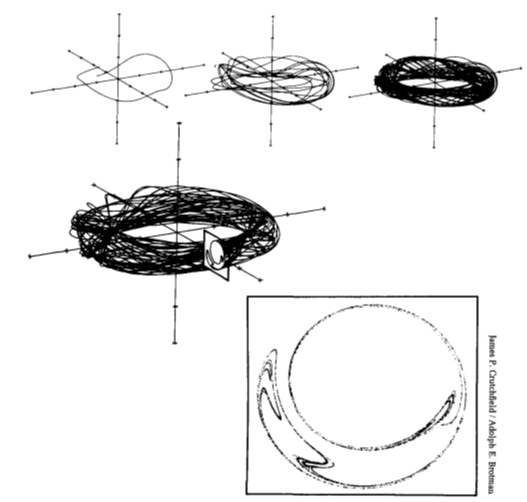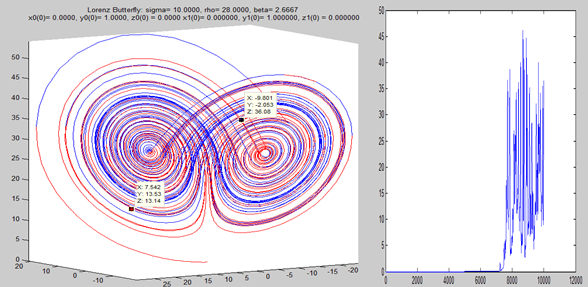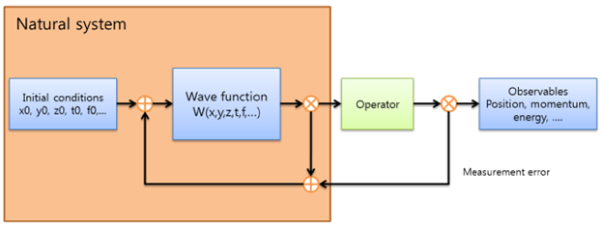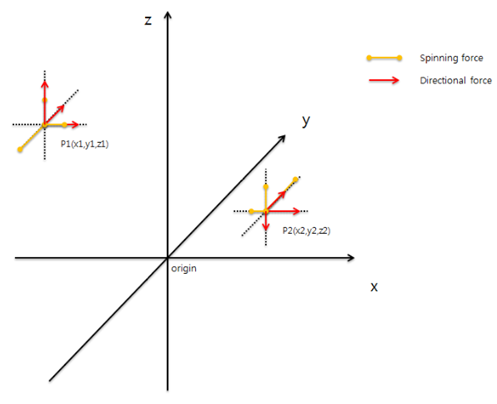An intuitive interpretation of the weirdness in the Quantum Mechanics
Oh Yeungjong ( @jooyou)
I am neither physicist nor mathematician and rather close to a science fiction writer. Having said that, here I will provide a reasonable interpretation on the some mysteries and weirdness of the QM which have been confusing many people since the birth of Quantum mechanics. Initially, all assumptions will be provided first and then those will be played a key role to describe some mysterious behaviors in QM.
For better understanding of my theory on the subject, it is necessary to think about not only QM but also Chaos theory at the same time. I strongly believe that summing up all necessary ideas taken from both QM and Chaos theory will solve the mysteries such as wave/particle duality and wave function collapse. Among many ideas developed in Chaos theory, most important ideas include the Sensitive dependency to the initial conditions and the recurrence relation in the system. In fact, the sensitivity to the initial conditions is just a characteristic of the recurrence relation. Why this sensitivity is so important in understanding QM in more classical way will be explained after presenting of some postulates.
Before delving into this subject in detail, it is helpful to make some definitions used in this writing.
- Phase space: A space in which all possible states of a dynamic system are represented, with each possible state of the system corresponding to one unique point in the phase space. [1]
- Observables: Any system property which can be observed or measured by some sequence of operation. For example, any subatomic object can be a dynamic system and observables include position, momentum, energy, frequency and so on.
- Operator: some sequence of operations to get an observable for a dynamic system.
Postulate 1:
Every physical entity which is fully defined in n dimensional space can be distinguished as one of three different forms where n is a positive integer: Singularity form, Simple periodic form (SPF) and dense periodic form (DPF).
This postulate was made by using the inductive method. Firstly I will introduce how point in 1 dimensional space can be identified as one of three different forms and extend it to N dimensional space.
그림1은 위상공간에서 표현될 수 있는 세가지 서로 다른 형태를 표시한 것이다. 전통적인 시계열(첫번째 줄)과 위상공간에서의 궤적(두번째 줄)은 같은 시스템 데이터를 표현 방법을 달리하여 표시한 것이다. 왼쪽(a)은 시간이 진행함에 따라 움직임이 0으로 진행하기에 위상공간에서 볼 경우 한점으로 수렴하게 되기에 이를 특이점형태(Singularity form)으로 구분할 수 있다. 이러한 형태는 0차원인 스칼라값에서도 발견될 수 있는데 세번째 줄의 숫자들은 각 형태를 대표하기 위한 예로 선택되었다. 특이점 형태에 해당하는 스칼라값은 모든 유한자리수를 가지는 유리수들을 포함한다. 두번째 열과 세번째 열은 위상공간에서 보았을 때 주기적으로 자신의 궤적을 지나가므로 단순 주기 형태로 분류할 수 있다. 마지막으로 네번째 열(c)은 위상공간에서 자신의 궤적을 다시 밟지 않기에 기본적으로 혼돈시스템에 속하고 얼핏 봤을 때 주기성을 찾을 수 없을 것 같지만 우리가 주기성의 의미를 확장한다면 주기성을 찾을 수 있다. 이에 대한 근거로 무리수의 표현에서 패턴을 찾을 수 있고 패턴을 찾을 수 있다는 것은 주기성이 존재한다는 것과 동치가 된다.
Figure 1: Three different forms in a phase space. First column (a) converges on a steady state – a point in phase space. This has correspondence with any finite digit number in that all descending digit converges 0. Both second and third columns belong to Simple periodic form because they repeat themselves periodically and so does for any rational number. Column c is actually chaotic but if we adopt broad view of periodicity, then we can see that there exists a sort of periodicity. [2] (GLEICKJAMES)
Dense periodic orbital in the deterministic chaos system
At first glance, the chaos system seems to be aperiodic because the trajectory of strange attractor in phase space does not intersect itself. But one of many sources writes that a chaotic dynamic system is generally characterized by having a dens collection of points with periodic orbits. In figure 2, a Poincaré section properly placed in phase space for taking a slice through a strange attractor can be used to some sort of periodicity by following steps.
- Record how many times the trajectory passes through the section, or volume area for space with more than 3 dimensions, per second
- Repeat step 1 until getting enough samples.
- Averaged it.
One important thing is that any physical entity having dense periodic form in phase space can be thought as a chaotic but stable system if consider that every scalar value including irrational number occupy a unique position in 1 dimensional space and strong belief that one basic nature of unit dimension will be maintained in higher dimensional space too.
Figure 2: One example for dense periodic orbit in the strange attractor. [2]
Postulate 2:
Every subatomic entity is basically a “PARTICLE” showing bounded non-periodic deterministic wave motion in phase space governed by a rule – let’s say it “oscillaticle” (oscillating particle).
My first assumption is that every subatomic entity must be a particle moving along a strange attractor defined in phase space and the strange attractor can be determined fully by a certain rule with initial conditions. One famous example of strange attractor, Lorenz attractor is shown in figure 1 just to provide a hint about what motion of the micro scale entity looks like. As a non-expert in mathematics and physics, I don’t have the exact wave function in the phase space to precisely describe the motion of it but it would be suffice, for the time, to describe some general concepts which can be pulled from Chaos theory.
The well-known quantum wave function Ψ(r,t) could be different from what mentioned above. To distinguish two functions, I will call my wave function as quantum oscillating function ㅂ(r,t,f). ㅂ is an one of Korean alphabet and can be sounded as b in “brush”. Here I will assume the number of free dimension of the phase space which my oscillating function ㅂ is defined is higher than 4. Why additional degrees of freedom in the phase space are necessary to determine the full motion of a subatomic object will be explained later when reasoning two-slit experiment.
In all deterministic chaos system governed by its own wave function defined in the phase space, in principle, every event or motion can be completely predicted with given initial condition. The phase space for microscopic entity can be composed of more than 3 independent vectors and they are guessed to include usually 3 basic position vectors, time t and force vector f which is defined in the force field. The trajectory called “strange attractor” has many features. It neither ends nor intersects itself and is bounded within finite area in the phase space.
There are two interesting characteristics which seem to contradict each other in the deterministic chaos system. One is that the sensitivity on the initial condition and other is the robustness to the small changes in the initial condition. In left side of figure 3, two colored trajectories which resemble each other are shown. They share same Lorentz equation [4] and parameters and what distinguishes them is only the very small difference in y0 of initial condition. Red colored trajectory was drawn using initial condition (0.0, 1.0, 0.0) and blue for (0, 1.000000004, 0). The system can be considered as robust or stable in that the small changes in the initial condition cannot break the overall shape of the trajectory in the phase space.
Figure 3: Left: The Lorenz strange attractor. =28, =10, =8/3. Red colored trajectory began at (0, 1, 0) and ended at point (-9.801,-2.053, 36.08). Blue trajectory started at (0.0, 1.000000004, 0.0) and ended at point (7.542, 13.53, 13.14). Both final end points were collected after iteration n=5000. Right: Distance/iteration graph. Distance axis is for absolute distance between two points lying on each trajectory at the same iteration.
The rule which decides the future motion of the entity includes the recurrence relation which can be seen in many nonlinear systems showing deterministic chaotic behavior. The recurrence relation makes possible the even microscopic scale difference of the initial condition exaggerated with great rapidity and the sensitivity on the initial condition is due to the existence of the recurrence relation.
The deterministic system means that the future of its motion is fixed at the initial time completely when it resumes evolving its motion and does not change unless any external event interrupt its evolution. The external event includes recording any particle’s observable or measurable by any means such as seeing or measurement. – This implies the deterministic behavior of the Quantum mechanics.
Figure 4 shows the abstracted block diagram for the evolving motion of the microscopic entity. The full system in the block diagram can be divided by two big blocks. One is the natural system part in the left which implies the deterministic nature and other is the remaining part which implies the random nature of the system. If there is no interrupt from outer world such as measurement, monitoring, that means no operation engaged in from external world and only the natural system part determines solely and fully the future motion of the entity.
For measurement of the system observable, I assume that there is no direct way to measure or check to see what the real value of the system observables are. Instead, as depicted in the picture, we can only use the Operators to measure all possible Observables such as coordinates, momentum, and energy.
Figure 4: Abstracted block diagram of system motion with feedback loop for an oscillaticle.
Postulate 3:
Every observable for any subatomic object must be single valued at any instance and place.
It is our strong belief that every physical property or value which we can touch, feel and measure must be unique at any instance if we really want to confirm or prove it. It means that the state of Schrödinger’s cat must be fixed into only one state, live or dead at any instance without exception. Coexistence of both alive and dead state is impossible in real life. If we want to predict states such as temperature, energy and position of a single and undividable entity, then result must be one and no superposition is allowed or out of our interest.
In order to predict the future behavior of a dynamic system with a governing equation and initial condition, we need to calculate the equation with respect to time. To do so, for an initial condition value, only single value must be picked and used in calculation. If two persons try to calculate a same equation with a different initial value, then their calculation outputs would not match. It is absolutely true for the case which the equation has the strange attractor in the phase space because of the sensitivity on initial condition feature.
Postulate 4:
Measuring an observable state of a system always add up a non-zero error to the state itself.
The wave-particle duality can be demonstrated in the double slit experiment [5]. In the experiment, putting detector at slits force light and matter to behave like a particle and removing detector will display of wave like behavior. From this result, we are forced to accept the fact that the measurement on the tiny little object can actually change the system state of it. Also we need to rethink about what the measurement mean.
The story begins with our limitation in prediction. This postulate is closely related with irrational number. Many observables are measured as a real number and as a consequence of Cantor’s proof it is known that almost all real numbers are irrational. [3]. If a variable value in an equation we try to calculate is an irrational number, then calculation can be completed only with a terminating digit number instead of the ideal never ending digit list. So it is obvious that the original irrational number Ni and the realized value Nr to be used in calculation have a following relation.
Nr = Ni + Ne, where Ne is a non-zero error. (2)
Let’s think about a thought experiment. For a chaotic dynamic system, there are one rule and an irrational value as initial condition. By definition of deterministic chaotic system, the future of the system is completely determined at the initial time. So after some time, the system state will arrive at a certain point in phase space which I call P1.
Now what I try to do is making a prediction and comparing it with P1. To make prediction, I need to calculate the given equation with initial value. As in equation (2), Nr is not same with Ni and precise prediction is impossible due to the sensitivity on initial condition.
From the result of the famous double slit experiments, we all know that measurement actually changes the behavior of the subatomic entity and I will take it for granted. To provide a reasonable explanation on why measurement changes the behavior, here I would like to suggest what measurement means the activity to realize an ideal property into something real which can be compared and distinguishable. The difference between the ideal value which was determined before the measurement and the measured value acts as an error and changes the system’s state. This error enables the trajectory branched out into a new path so that the final state could be far away from the expectation at before measurement or two trajectories would be getting uncorrelated in time.
The right side of figure 4 shows how the inevitable error, a byproduct of measurement, affects the current state of the system and future in time. The left side of the diagram enclosed in a box is actually a deterministic system and its future is fully determined at initial time if there is no interrupt from outer world such as measurement or recording any observables.
So far I provided above postulates and given those any weirdness and secrets in QM can be explained in more intuitive way.
Note: Below descriptions came all from my intuitions or output of thought experiment using the above my postulates and are not verified yet.
Figure 5: Forces acting at two points within force field. In force set, 6 elementary forces include 3 directional forces and 3 spinning forces. Energy creates a force field in space and 6 elementary forces act at every point in the space. These forces can be changed with respect to time.
A new model for any subatomic physical object (SPO)
From the postulate 2, I assumed that the dynamic system for SPO is fully defined in phase space and its trajectory in the phase space has a DPF. It means DPF is a strange attractor. In estimating the equation for the DPF system, I know neither the precise equation nor how many dimensions will be need. But in favor of the string theory requiring space with 11 dimensions, I assume that the function has the following form.
Oscillating function ㅂ: ㅂ(x,y,z,t,Fx,Fy,Fz,Tx,Ty,Tz)=R ———————————————(1)
, where (x,y,z) is a position vector in Cartesian coordinate system and (Fx,Fy,Fz) is a directional force vector at point (x,y,z) and (Tx,Ty,Tz) is a spinning force vector at point (x,y,z) and R is a scalar value.
My intuition is that any form of energy in space will creates a force field with above 6 force unit vectors influencing every point in the space.
Below list includes several features derived from my model.
- For SPO, if the trajectory in phase system has a dense periodic form, so called the strange attractor, the scalar value R must be an irrational number.
- For SPO, there are several mathematical operators which can calculate corresponding observable in conjunction with the oscillating equation (1). For example, the action of the operator to get energy will result in a scalar value representing SPO’s energy at a point set (x,y,z,t,Fx,Fy,Fz,Tx,Ty,Tz, R).
- If SPO gets more energy, then movement frequency in dense periodic orbital of its own strange attractor is also increased based on the famous equation. . For measuring ν, refer to the postulate 1part.
- If SPO has infinite amount of energy, its frequency is also infinity and become singularity form, maybe it can be a black hole.
- If the bounded area of a self-oscillating SPO does not move, there is no kinetic energy for the SPO. If the bounded area moves with velocity v, then the classical Kinetic energy law is applied to the entity with mass m.
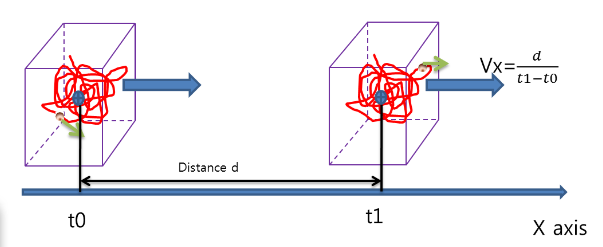
Figure 6: Total energy of a subatomic entity moving velocity v along x axis. Total energy = Potential Energy + Kinetic Energy. , . Resting mass () for any subatomic object seems to have a following relation: at least when the center of the bounded area containing the whole trajectory of strange attractor for an SPO does not move at all in the phase space.
How energy of SPO can be quantized.
Figure 7: Energy quantization. Tendency to bind a SPO motion close to its shape in phase space force the energy level quantized.
The strange attractor has two important features. One is the sensitivity on initial condition and another is the stability on initial condition. The former is well known and explained in every chaos text. On the other hand, the latter has been of no concern but is a key feature which makes possible energy level quantized.
For an SPO, every observable can be divided into two categories: time-variant and time invariant. Because of the energy conservation law, energy belongs to the time invariant type. So the energy observable of the SPO does not change in time while the system state running on the trajectory in phase space.
As the name of strange attractor implies, it is a sort of stabilizer with tendency to bind motions with its trajectory as close as possible. It means that small difference in the initial condition does not change the overall shape of the trajectory in phase space as can be seen in figure 3. The binding force trying to maintain the overall shape of trajectory is so strong, even small fluctuation, for example energy, in the dynamic system will soon disappear and the energy level kept to where it should be.
For SPO, energy absorption from collision with external particle is possible. In such case, it causes a sudden jump to different point away from current point in phase space which corresponds to the system state. If the absorbed energy is big enough to change the energy to higher level, then the system will switch to different trajectory with higher energy level in phase space.
As I know so far, the intuitive explanation for energy quantization mechanism is available only with adoption of the chaos theory what I described above.
Reference
- GLEICKJAMES. . “CHAOS MAKING A NEW SCIENCE.” PENGUIN BOOKS.
- Cantor, Georg (1955) [1915].Philip Jourdain, ed.Contributions to the Founding of the Theory of Transfinite Numbers. New York: Dover.ISBN 978-0-486-60045-1.
- Lorenz, Edward Norton(1963). “Deterministic nonperiodic flow”.Journal of the Atmospheric Sciences 20 (2): 130–141.
- Feynman, Richard P.; Robert B. Leighton; Matthew Sands (1965).The Feynman Lectures on Physics, Vol. 3. US: Addison-Wesley. pp. 1.1–1.8.ISBN 0201021188.
